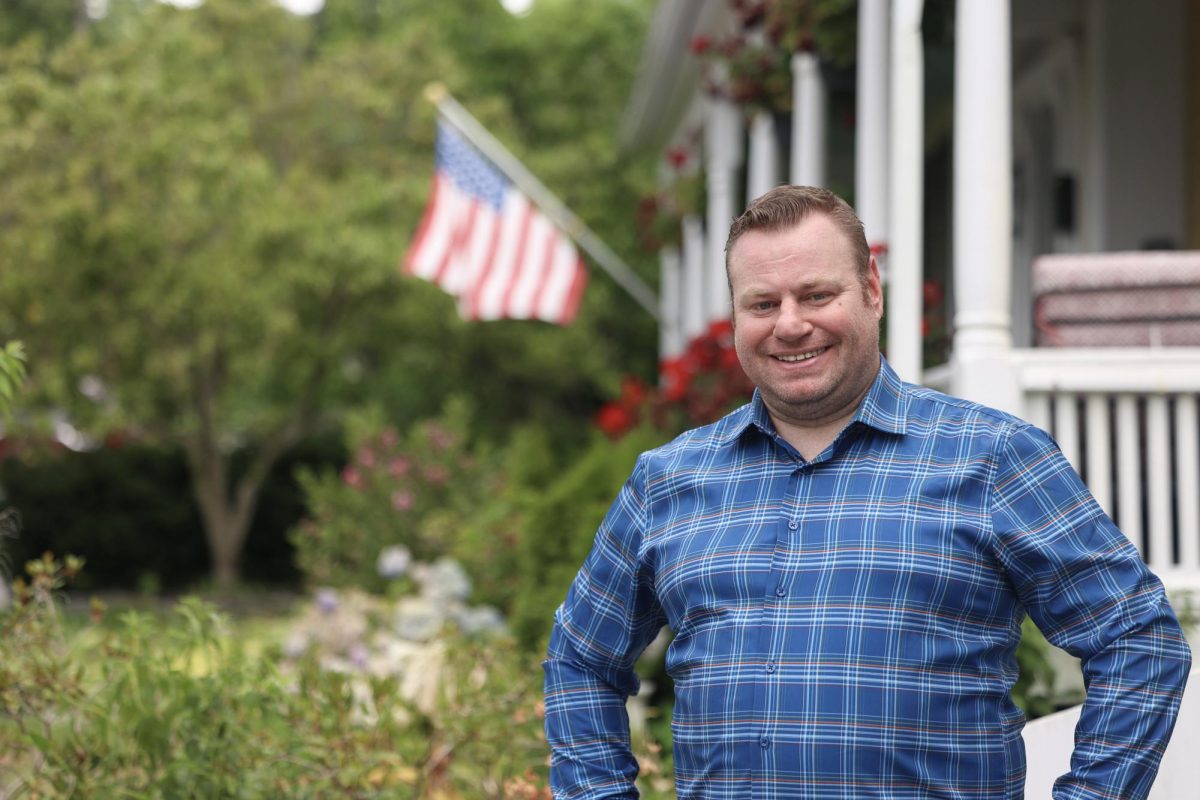On October 20th, Ward Melville High School celebrated The National Day of Writing by posting prompts for students to respond to throughout the day. Students from all three grade levels filled the English hallways, leaving hundreds of responses.
Clubs and teachers generated the prompts, hoping to spur thoughtful responses. Some of the questions asked were, “Why do you write?” or “How do you see AI shaping your future?” Students drew pictures, quoted songs, shows, and movies, or described their feelings.
AP Language and Composition teacher, Lisa Crispino, says, “We hope that they [students] will see that there are many types of written expression. Even things that are funny or silly have value. Everybody’s thoughts have value. Everybody’s way of expressing themselves has value.”
Students expressed similar feelings about the importance of writing. Kaleidoscope Co-Editor-in-Chief, Serena Carpino, shares, “I think writing is particularly valuable for students since it gives us a legitimate platform to share our thoughts, views, and concerns about our world, whether it be complex world conflicts or our opinions on the latest songs.”
English courses, like AP Language and Composition, or AP Literature, often focus on the technical side of writing and reading. Ward Melville English Teacher, Jeremy Oatis, says, “They [high school students] really don’t have the opportunity to express themselves in writing anymore.”
In 2009, the National Council of Teachers (NCTE) of English created the National Day on Writing. Their goal is to involve the writers of America to discuss and enhance their craft. According to the council, “It’s important for everyone to share their knowledge about writing, organizes participating groups in our schools and communities, and transform the public’s understanding of writing and its role in society today.”
The NCTE has numerous goals it hopes to accomplish with the dedicated day, such as: identifying standards for writing, reading, and literary levels; defining 21st-century writing characteristics and themes; creating a strong standpoint on academic and intellectual independence; and developing diversity in teaching and literature.
The hashtag #WhyIWrite can be used on social media platforms to promote the National Day on Writing and share people’s specific motivations for participation.
One student responded to the “Why do you write?” prompt by saying, “I write to express my feelings I have trouble sharing with others.” Another wrote, “I write to organize my thoughts. Writing is visual and can be analyzed easier than my thoughts or words.”
A separate wall question invited students to retell a story, which many covered with film, book, or song quotes. Almost half of the large paper was covered with Taylor Swift lyrics that students related to.
Some other ways the NCTE recommends marking the occasion include: journaling, sharing work or a general statement about writing on social media, reading other people’s stories, or getting outside of their comfort zone in writing.
Ward Melville’s observation and participation in the national celebration can also serve an academic purpose, according to Lisa Crispino, “We’re hoping to get kids to feel more comfortable and trust themselves more.”
McKinsey and Company conducted research that shows that the long-term effects of COVID are continuing to take a toll on students’ learning pace. According to the study, students were left an average of five months behind in math and four months behind in reading.
Crispino says, “I don’t know if it’s COVID-related or it’s cell-phone-related, or now if it’s AI-related. But, I do think students sometimes struggle to generate original writing and I think they don’t always feel as confident in their writing as they used to.”
Several initiatives have been implemented nationwide to help bridge the gap. One plan that has caught the attention of many school boards is to add more school days. Nation Center on Time and Learning reports that the amount of time spent in school is one of the greatest determining factors of how a student succeeds later in life. Experts suggest that 300 or more hours of teaching than is conventional provides enormous benefits in later life.
The additional time, they noted, should also be equipped with tutoring, feedback to students, incorporating data, and high standards.
The inventive ways school districts have attempted to make up for learning loss have been very different. Three Village Central School District has introduced many different initiatives and smaller lessons to involve the schools in learning. For example, to better help students prepare for the college admissions process, Three Village switched from using Naviance to Schoolinks.
The administration believes that Schoolinks offers better data and program options to help students. The scattergram option for different colleges also shows past Ward Melville students’ acceptance rates with GPA and standardized test scores. Schoolinks also uses your data to determine target, reach, and safety school options.
Discussions about altering the start time for school or changing which grade levels are a part of which schools are ongoing. Such major changes could allow more students to be involved in clubs or take up other courses after an era of COVID-caused decline in engagement.








